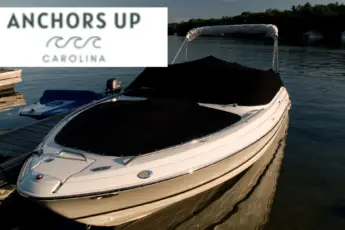As a former captain, I needed to operate a boat frequently when docking in marinas. I know all of the important things to consider. Remember, you never want to cause damage to your vessel, the dock, or the passengers onboard. If you’re new to boating and docking in reverse, here are 5 things to consider when backing up a boat.
Watch The Corners When Backing Into A Slip
In most cases, boat owners do not need to back into a face dock compared to a boat slip. With that said, you need to be aware of the port and starboard corners when backing down.
When I was running boats, I could often drop the motors in hard reverse and stuff the boat into position. However, that took years of experience.
In the situation where you’re new to boating, you’re going to need to maintain momentum in order to avoid going off course. However, when carrying momentum, you need to be aware of the corners.
With that said, watch the port and starboard corners when backing to avoid making contact with the dock or pilings. If need be, pull forward and realign. This is particularly the case when you’re encountering winds and currents.
Don’t Back Down Too Far
When I was working aboard private yachts, one of the captains carried too much momentum and drove the stern of the boat into the dock. He was already in the slip but failed to stop the boat in time.
When you’re backing down, watch the amount of speed you are carrying. If need be, bump the gear ahead to slow the boat if you’re approaching rapidly; however, if you’re about to strike the stern, throttle forward to stop moving backward.
Unfortunately, boats and docks are damaged due to backing up into the dock. Also, you’re at risk of causing injury to passengers as a result of the impact.
Monitor The Position Of Your Bow
All too often, inexperienced boaters fail to monitor the position of the bow when backing down. Unfortunately, the bow does not always carry in line with the dock to remain parallel.
In some cases, when encountering wind and current, the bow will drift either port or starboard. I have had some situations where the bow was unaligned, and I was at risk of striking the forward portion of the boat against the dock or a piling.
While your primary focus should not be forward, you’re going to need to take a peak every once in a while. If need be, lay the bow up on a piling and pivot to get realigned. Alternatively, pull out of the slip and readjust. You’re likely going to need to reverse with more speed.
Have The Spring Line Ready To Secure To The Dock Cleat
It should be noted that the spring line can be a lifesaver when it comes to backing a boat into a slip or face dock.
The spring line serves a couple of important purposes, which is why it should be standing by and ready to go.
When you’re backing up a boat, place the spring line on the cleat whenever possible. However, don’t lock it down until you’re in position. The spring line will first prevent the boat from moving backward to the point that it hits the dock. Secondly, it will hold the boat tight against the side of the dock so the other lines can be secured with ease.
Pull Out Of The Slip If You’re Out Of Position Or Out Of Control
In the situation where you are out of control when backing down a boat, it is imperative to pull forward and make a second attempt.
In some cases, boaters become panicked and overcorrect. The corrections cause the boat to become out of control and are more likely to cause damage to the boat, dock, and other vessels.
With that said, never force a dockage when backing up a boat. Your best bet is to pull out, assess the conditions, adjust, and reverse again back into the slip. You’ll be thankful that you made the correction.
Back Up A Boat Like A Pro
Understanding the risks associated with backing in a boat will help you better drive the boat into a slip in reverse. Trust me, it took me time to hone my skills, and you should expect the same. In areas with stiff currents, the challenge will undoubtedly be greater. Remember to remain patient and avoid becoming panicked.






